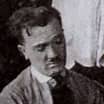Rocky and Mugsy made their debut in the animated short titled "Racketeer Rabbit," which was released in 1946. However, it wasn't until 1953 that the characters were officially paired together in "By Word of Mouse." This cartoon featured the mobster Rocky, voiced by Mel Blanc, and his dimwitted sidekick Mugsy.
Characters:
- Rocky is a small but ruthless mobster who often takes on the role of a leader. Despite his diminutive size, he is tough, cunning, and has a distinctive nasal voice.
- Mugsy, on the other hand, is a large, lumbering character who is loyal to Rocky but lacks intelligence. He often serves as the muscle for Rocky's schemes.
Classic Shorts: Rocky and Mugsy appeared in a series of classic Looney Tunes and Merrie Melodies shorts produced by Warner Bros. These cartoons often revolved around the duo's criminal activities and their interactions with Bugs Bunny or other characters.
Notable Shorts:
- "Bugs and Thugs" (1954): Bugs Bunny outsmarts Rocky and Mugsy, leading to comedic confrontations.
- "Gun Crazy" (1950): This cartoon features Daffy Duck interacting with Rocky and Mugsy, with the former being a gangster.
Legacy: The Rocky and Mugsy duo became iconic for their recurring roles as comically inept gangsters in the Looney Tunes universe. Their shorts are remembered for the humorous interactions between the characters and their foiled attempts at outsmarting the likes of Bugs Bunny and other classic Warner Bros. characters.
Conclusion:
While "Rocky and Muggsy" may not have been as prominent or long-running as some other Looney Tunes characters, their presence in various animated shorts contributed to the rich history and humor of the Looney Tunes franchise.















